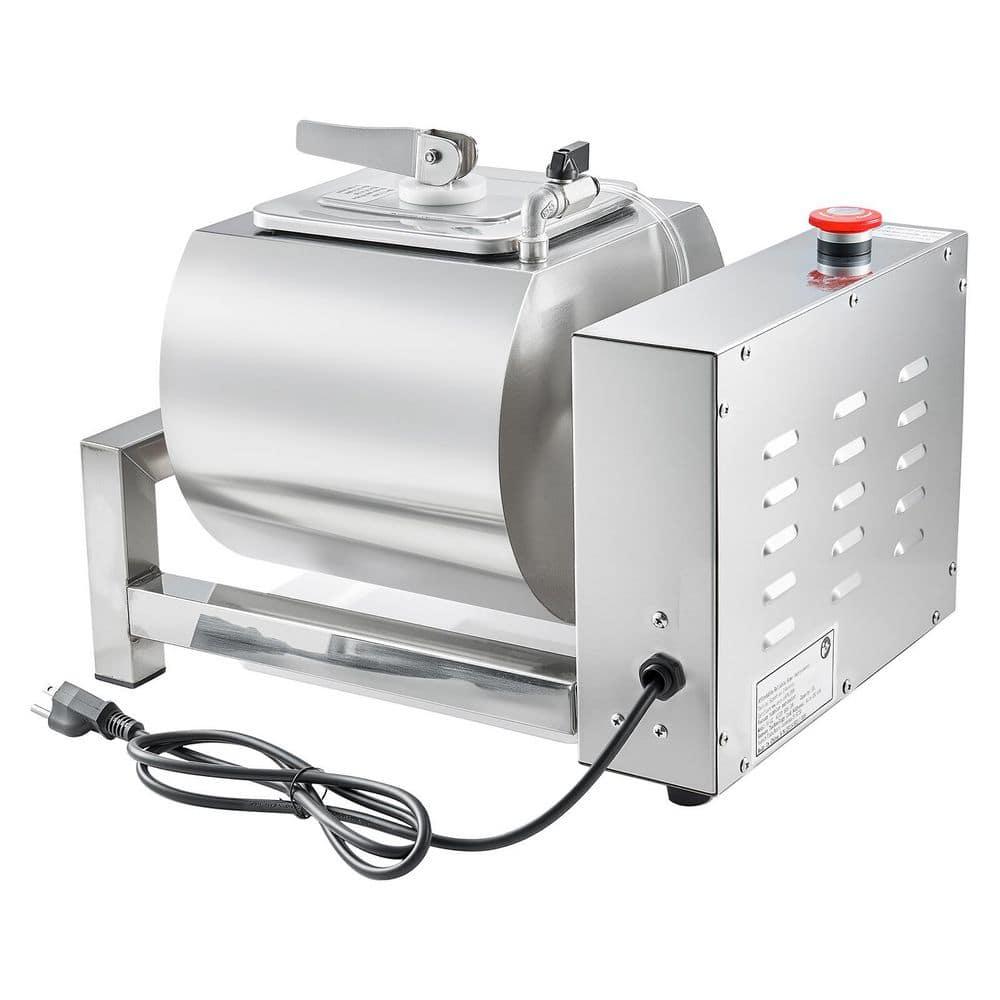10 years of experience as a food machinery equipment manufacturer
10 years of experience as a food machinery equipment manufacturer
Commercial vacuum tumbler marinators represent a significant advancement in food processing technology, particularly for businesses involved in preparing meat, poultry, and seafood. These machines are designed to accelerate the marination process, improve product quality, and enhance operational efficiency. By combining vacuum technology with mechanical tumbling, they offer a sophisticated solution for infusing flavor and tenderizing products more effectively than traditional static marination methods.

The adoption of commercial vacuum tumbler marinators in food preparation environments offers a multitude of advantages. These benefits contribute to both superior product characteristics and improved business outcomes.
When investing in a commercial vacuum tumbler marinator, several key features should be evaluated to ensure the chosen equipment meets the specific needs of the operation. Careful consideration of these aspects will contribute to long-term satisfaction and performance.
Commercial vacuum tumbler marinators are versatile pieces of equipment, finding applications in a wide array of food service and processing environments. Their ability to improve product quality and efficiency makes them valuable in various sectors.
In restaurants and catering businesses, these machines allow chefs to consistently produce high-quality marinated meats, poultry, and seafood for their menus. They enable faster preparation times, which is crucial in fast-paced kitchen environments, and help in creating signature dishes with distinctive flavors and textures. Caterers benefit from the ability to process larger batches efficiently, ensuring uniformity for events.
Butcher shops and specialty meat retailers utilize vacuum tumblers to create value-added products. By offering pre-marinated cuts, such as seasoned steaks, chicken portions, or pork loins, they can appeal to customers seeking convenience and enhanced flavor, often commanding premium prices for these items.
Meat processing plants, ranging from small-scale operations to large industrial facilities, rely heavily on vacuum tumbling technology. It is integral to the production of items like bacon, ham, jerky, deli meats, and a variety of marinated raw products. The efficiency and consistency offered are essential for meeting high-volume demands and maintaining quality standards.
The seafood industry also benefits, using tumblers to marinate fish fillets and shellfish, improving flavor absorption and texture for both fresh and frozen product lines.
The effectiveness of commercial vacuum tumbler marinators stems from the scientific principles they employ. The process involves two primary mechanisms: the application of a vacuum and mechanical action through tumbling.
When a vacuum is drawn within the tumbler drum, air is removed not only from the drum itself but also from within the interstitial spaces and cellular structure of the food product. This reduction in atmospheric pressure causes the muscle fibers and tissues to expand, effectively opening up pathways for the marinade. When the vacuum is released, or during the tumbling phase under vacuum, the pressure differential forces the marinade to penetrate these expanded spaces more rapidly and deeply than would occur under normal atmospheric conditions. This accelerated absorption is a key factor in reducing marination times.
The mechanical tumbling action complements the vacuum process. As the drum rotates, internal baffles lift and drop the product. This gentle massaging action serves multiple purposes: it ensures even distribution of the marinade over all product surfaces, it physically helps to break down tougher muscle fibers, contributing to tenderness, and it can facilitate the extraction of salt-soluble proteins to the surface of muscle meats. These extracted proteins can improve binding properties, water-holding capacity, and overall texture, especially in processed meat products.

The integration of a commercial vacuum tumbler marinator into a food processing operation can have a profound impact on both the quality of the end product and the financial health of the business. Products treated with this technology are often described as more flavorful, juicier, and tenderer, leading to increased customer satisfaction and loyalty.
From a business perspective, the benefits are equally compelling. Increased yield, due to higher marinade absorption and better moisture retention during cooking, translates directly into more saleable product from the same amount of raw material. Reduced marination times free up production capacity and allow for more agile responses to market demands. Labor costs can be lowered through automation of the marination step. Furthermore, the ability to consistently produce a superior product can justify premium pricing and enhance brand reputation, contributing to increased revenue and market share.
Commercial vacuum tumbler marinators are more than just pieces of equipment; they are strategic tools that enable food businesses to elevate their products and optimize their operations. By leveraging the principles of vacuum science and mechanical action, these machines offer a reliable and efficient method for enhancing flavor, improving texture, and increasing yield in a variety of food products. For businesses aiming to achieve consistent quality, operational efficiency, and a competitive edge, the commercial vacuum tumbler marinator represents a worthwhile investment with tangible returns.
